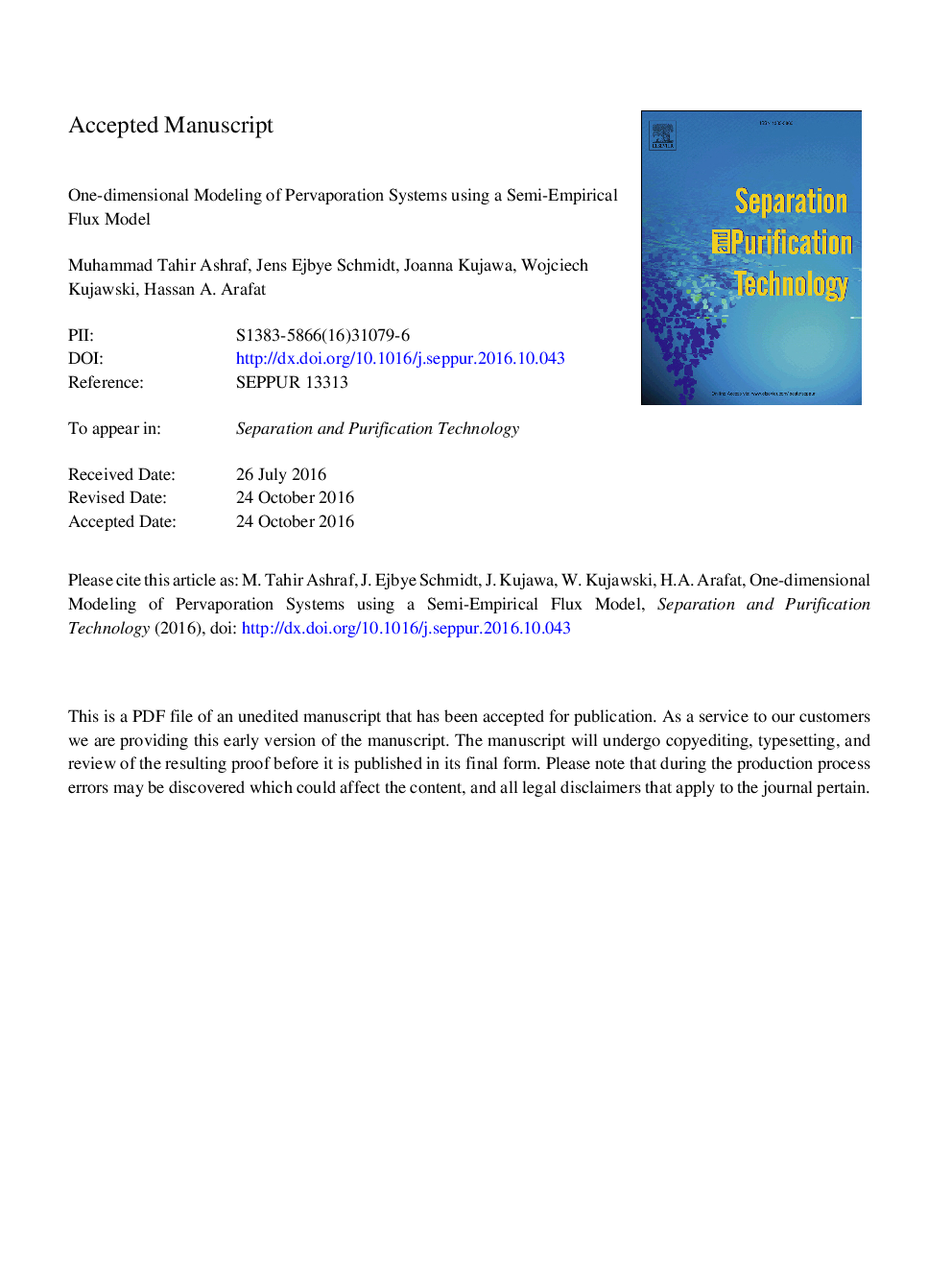| Article ID | Journal | Published Year | Pages | File Type |
|---|---|---|---|---|
| 4990213 | Separation and Purification Technology | 2017 | 33 Pages |
Abstract
Sizing of large scale pervaporation units from experimental data requires mathematical models which can predict the pervaporation process performance adequately. In this work, a modeling approach is reported with a semi-empirical flux model regressed over experimental flux data measured at lab scale. The regression approach generates a temperature and concentration dependent flux function that can be solved simultaneously with material and energy balance over the length of a pervaporation module. For a binary mixture only four parameters are required for model fitting which can be obtained using lab-scale data: temperature and concentration of one component on feed side, permeate side pressure, and component flux. The semi-empirical flux model was verified using two separate experimental dataset for 1-butanol/water dehydration system using PERVAP 2510 membrane. The flux model was then used to solve a one-dimensional (1-D) pervaporation model to generate flux, concentration, temperature and PSI profiles over the length of the membrane modules. The 1-D model also calculates the size and arrangement of the pervaporation modules. Using the experimental data reported in literature, the proposed approach was used to size pervaporation modules for three dehydration systems: 1-butanol over PERVAP 2510, isobutanol over PERVAP 2510, and isobutanol over PERVAP 1510. Sensitivity analysis was also conducted.
Related Topics
Physical Sciences and Engineering
Chemical Engineering
Filtration and Separation
Authors
Muhammad Tahir Ashraf, Jens Ejbye Schmidt, Joanna Kujawa, Wojciech Kujawski, Hassan A. Arafat,
